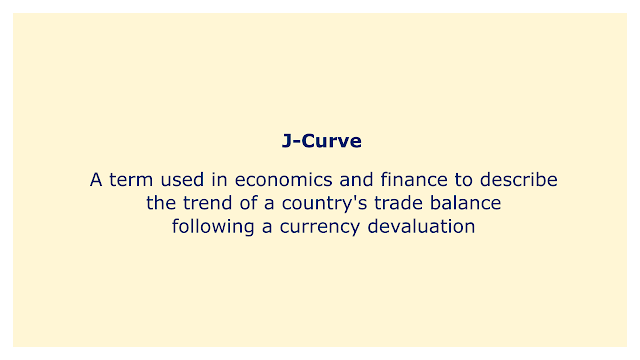 |
| Image: Moneybestpal.com |
The J-curve is a term used in economics and finance to describe the trend of a country's trade balance following a currency devaluation. The J-curve effect happens when the balance of trade initially suffers following a devaluation or depreciation of a country's currency, then steadily improves over time, forming a curve that resembles the letter "J".
The time lag between currency devaluation and changes in the demand for exports and imports is what causes the J-curve effect. A nation's trade balance will rise temporarily when its currency is devalued because exports will be cheaper and imports more expensive. However, there is a delay before the country's export volume adapts to the new price, during which time the country experiences a decline in export revenue and an increase in import spending. This causes a transient deterioration of the
Foreign consumers start buying more exports as a result of the cheaper price as domestic companies gradually adapt their manufacturing methods and pricing to the new exchange rate. Also, as a result of the rising cost of imports, domestic consumers shift their preferences toward more native goods. The trade balance gradually improves as a result of these changes in demand and supply patterns, which also result in more export earnings and lower import expenses.
Policymakers should consider the J-curve effect, particularly in the context of exchange rate regulation. It implies that depreciating a currency has a short-term cost, but that this cost can be mitigated over time by an improvement in the trade balance. Policymakers should be aware of the J-curve effect because they must take this time lag into account before enacting exchange rate regulations.
